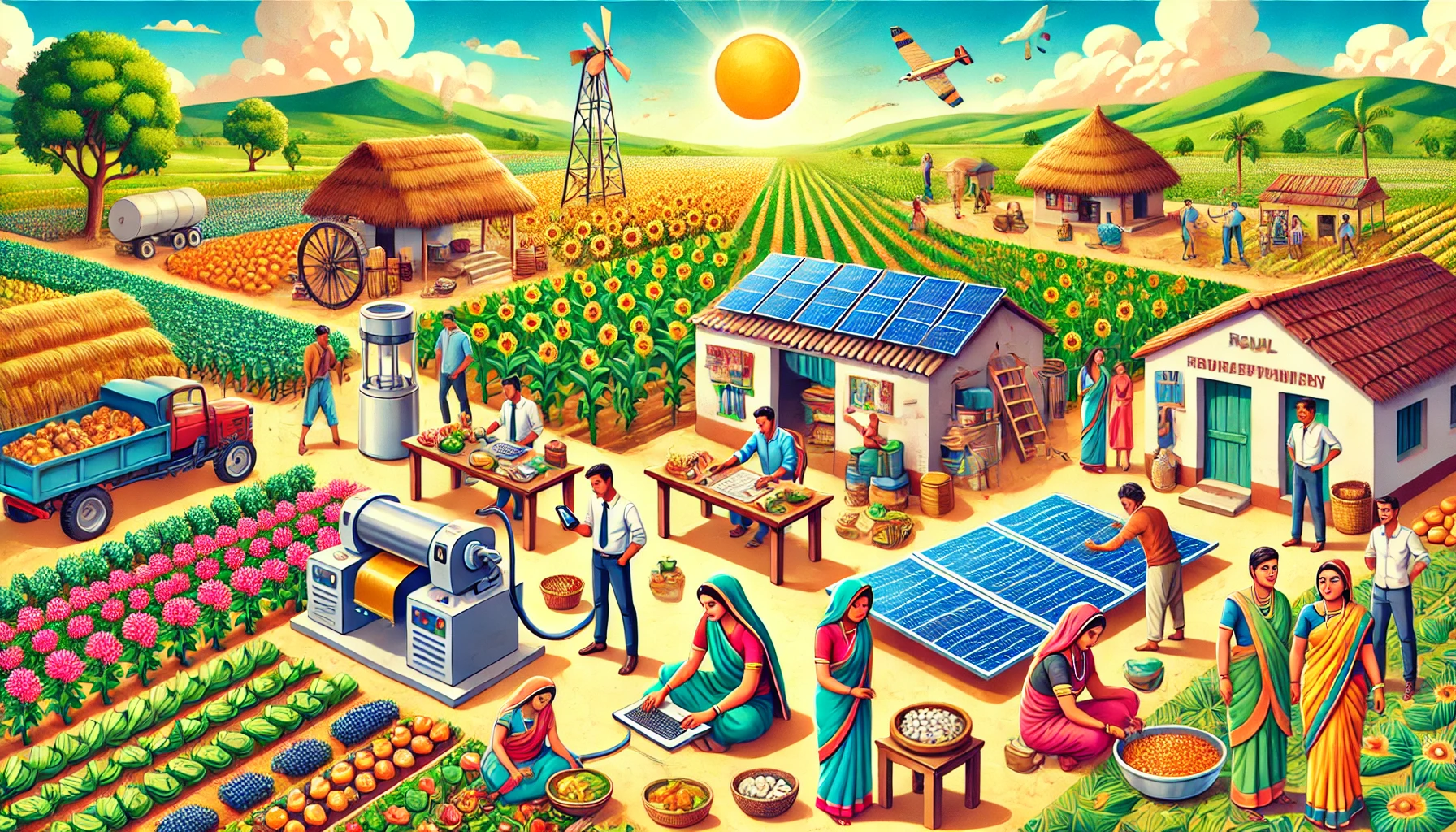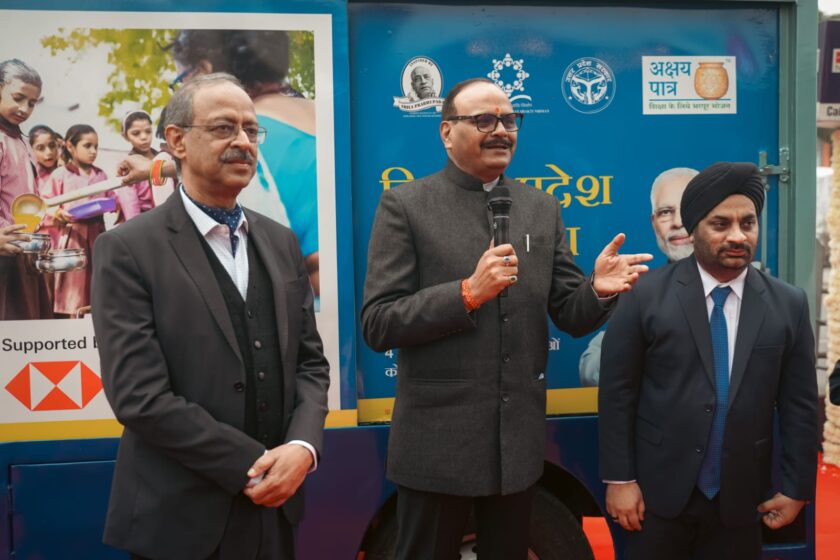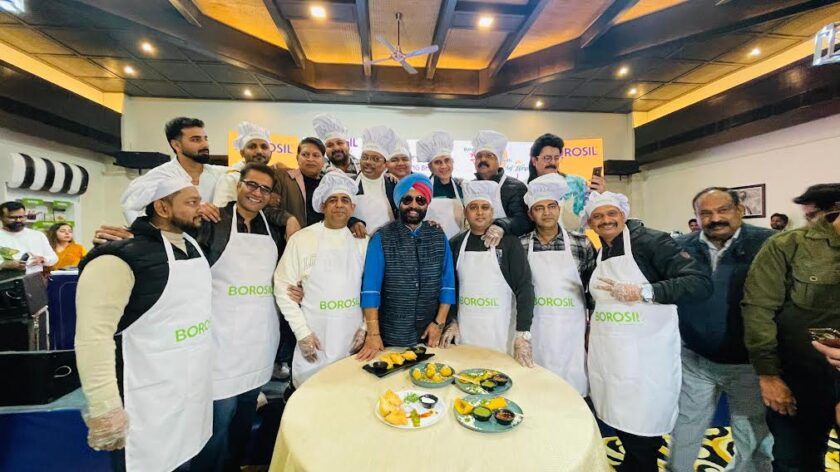Lucknow: India’s vast rural landscape holds immense potential to drive economic growth through entrepreneurship. While rural areas have long been associated with agriculture and traditional crafts, new opportunities are opening up, creating a fertile ground for rural businesses to thrive. This potential is being harnessed through a combination of government initiatives, skill development programs, financial institutions, and technological advancements. In this report, we will examine the ways rural India is becoming a hub for business and how various ideas are fueling the success of rural entrepreneurs.
Nurturing Rural Entrepreneurship
Government Initiatives
The Indian government has launched several schemes to promote entrepreneurship in rural areas. Some of the key programs include:
- Startup India: This initiative has inspired rural entrepreneurs to think big by providing financial support, tax benefits, and access to incubation centers.
- Pradhan Mantri MUDRA Yojana (PMMY): PMMY has disbursed over INR 25 lakh crore in loans to micro and small enterprises since its inception in 2015. By providing loans of up to INR 10 lakh, it has enabled numerous rural entrepreneurs to start or expand businesses without the burden of collateral.
- Stand-Up India Scheme: Targeted specifically at women and marginalized communities, this scheme offers loans of INR 10 lakh to INR 1 crore. Since its launch, over 2.5 lakh entrepreneurs have benefited from it.
These initiatives are crucial in empowering rural entrepreneurs to build sustainable businesses and contribute to local economies.
Skill Development Programs
Skill development is essential for nurturing entrepreneurial talent. The Pradhan Mantri Kaushal Vikas Yojana (PMKVY) has trained over 12 million individuals since 2015, a significant proportion of whom are from rural areas. Organizations like the National Skill Development Corporation (NSDC) and various NGOs have collaborated to equip rural individuals with skills in fields like agriculture, craftsmanship, and digital literacy, laying a strong foundation for rural entrepreneurship.
Microfinance Institutions
Microfinance institutions (MFIs) play a critical role in financing rural businesses. India’s microfinance industry serves over 60 million borrowers, and MFIs disbursed approximately INR 2.5 lakh crore in loans in FY2022-23. By providing small loans with flexible repayment schedules, MFIs allow rural entrepreneurs to fund and scale their businesses without requiring traditional bank credit. For example, Bandhan Bank and SKS Microfinance are major players in this sector, empowering millions with access to credit.
Digital Literacy
The Digital India initiative has been instrumental in increasing digital penetration in rural areas. Smartphone usage in rural India is expected to grow at a rate of 15% annually, reaching over 650 million users by 2025. This digital revolution has facilitated access to e-commerce platforms, financial services, and real-time market information, empowering rural entrepreneurs to make informed business decisions and reach wider markets.
How Rural India is Driving Business
Agriculture and Agribusiness
Agriculture remains the backbone of rural India, contributing 18% to the country’s GDP. With 60% of the rural population dependent on agriculture, innovative ideas in agribusiness are crucial for economic growth:
- Organic Farming: The market for organic products in India is growing at 20% per year and is expected to reach INR 75,000 crore by 2026. Farmers in states like Karnataka and Maharashtra are increasingly adopting organic farming techniques, meeting urban demand for chemical-free products and gaining premium prices.
- Precision Agriculture: Technologies like soil sensors, satellite mapping, and AI-powered analytics are helping farmers improve yields and reduce wastage. This sector is estimated to grow at a compound annual growth rate (CAGR) of 12.3% from 2023 to 2028.
Rural Tourism
India’s rural tourism industry has experienced significant growth, providing employment opportunities and generating income for local communities:
- Homestays and Farm Stays: States like Uttarakhand, Himachal Pradesh, and Kerala have capitalized on rural tourism, promoting homestays and eco-tourism. According to the Ministry of Tourism, rural tourism in India generates about INR 2,000 crore annually, offering a livelihood to approximately 10 million people.
Handicrafts and Artisanal Products
The rural handicrafts sector employs over 7 million artisans and contributes INR 10,000 crore to the national economy. Artisans are increasingly using e-commerce platforms like Amazon Karigar and Etsy to sell their products globally, generating new revenue streams for rural households.
Food Processing
The food processing industry in rural India provides substantial opportunities for value addition and employment. India’s food processing sector is worth approximately INR 2.4 lakh crore, with rural areas benefiting from agri-processing units that convert raw produce into value-added products. For example, small food processing units in states like Punjab and Uttar Pradesh add value to produce like fruits, milk, and cereals, supporting local economies.
Renewable Energy
With over 60% of the country’s renewable energy potential located in rural areas, India’s rural landscape is perfect for solar and wind energy projects. The government’s PM-KUSUM scheme has installed over 2 million solar pumps for agriculture, enabling farmers to harness solar energy for irrigation and reducing dependency on traditional fuels.
Ideas that Fuel Rural Entrepreneurial Success
Leveraging Local Resources
Rural entrepreneurs are maximizing local resources to develop unique products and services. For instance, the bamboo-based industry in Northeast India is projected to reach INR 30,000 crore by 2025, fueled by local entrepreneurs who craft products like furniture and household items.
Adopting Technology

The adoption of technologies such as drones, IoT, and AI is transforming rural businesses:
- Agricultural Drones: Drones are being used for precision spraying, mapping, and crop monitoring. India’s agri-drone market is expected to grow at a CAGR of 18% over the next five years.
- Mobile-Based Solutions: Mobile applications like DeHaat and AgroStar provide farmers with real-time advice on crop management, weather forecasts, and market prices, enhancing productivity and profitability.
Building Strong Networks
Rural entrepreneurs benefit from partnerships with NGOs, government agencies, and fellow entrepreneurs. Platforms like Self-Employed Women’s Association (SEWA) and National Rural Livelihoods Mission (NRLM) have created strong support systems that help rural entrepreneurs gain access to resources, training, and markets.
Social Entrepreneurship
Social enterprises are making a big impact in rural areas by addressing issues like poverty, healthcare, and illiteracy. For example, Barefoot College trains women in rural Rajasthan to become solar engineers, enabling them to electrify their villages and create employment.
Focus on Quality and Innovation
Rural businesses that prioritize quality and innovation stand a better chance of competing in national and global markets. Success stories like Mitticool – an eco-friendly clay refrigerator, and Amul – which revolutionized India’s dairy industry, demonstrate the transformative power of high-quality, innovative products in rural entrepreneurship.
Notable Rural Entrepreneurs Driving Change
The success stories of rural entrepreneurs illustrate the power of innovation and resilience:
Devika Rani – Organic Farming Pioneer:
From Karnataka, Devika transformed a small plot into a thriving organic farm producing jams, pickles, and teas.
Employs over 50 women from her village, creating local economic growth.
Mansukh Patel – Cotton Processing Innovator:
Invented the Chetak machine for cotton stripping, revolutionizing India’s cotton industry and saving farmers time and labor costs.
Mansukhbhai Prajapati – Eco-Friendly Cooling:
Developed the Mitticool, a clay refrigerator that provides sustainable cooling without electricity.
His innovation supports sustainable living and provides affordable cooling for rural households.
Chintakindi Mallesham – Low-Cost Irrigation Solutions:
Designed a solar-powered irrigation pump for small farmers, reducing irrigation costs and boosting agricultural productivity.
Dadaji Ramaji Khobragade – High-Yield Rice Innovator:
Developed the HMT rice variety, a high-yield, drought-resistant crop that has helped improve food security and livelihoods for millions.
India’s rural sector is undergoing a transformation driven by government support, technological advancements, and local innovations. By fostering entrepreneurship and supporting rural businesses, India can unleash the potential of its rural population to contribute significantly to the national economy. With the right combination of policy support, skills development, and financial inclusion, rural India can indeed emerge as a powerhouse of economic growth and social change, creating a more equitable and prosperous nation.
By spotlighting the stories of rural entrepreneurs and scaling successful models, India can inspire a new generation of rural business leaders, ensuring sustainable development and a thriving economy that benefits all.





